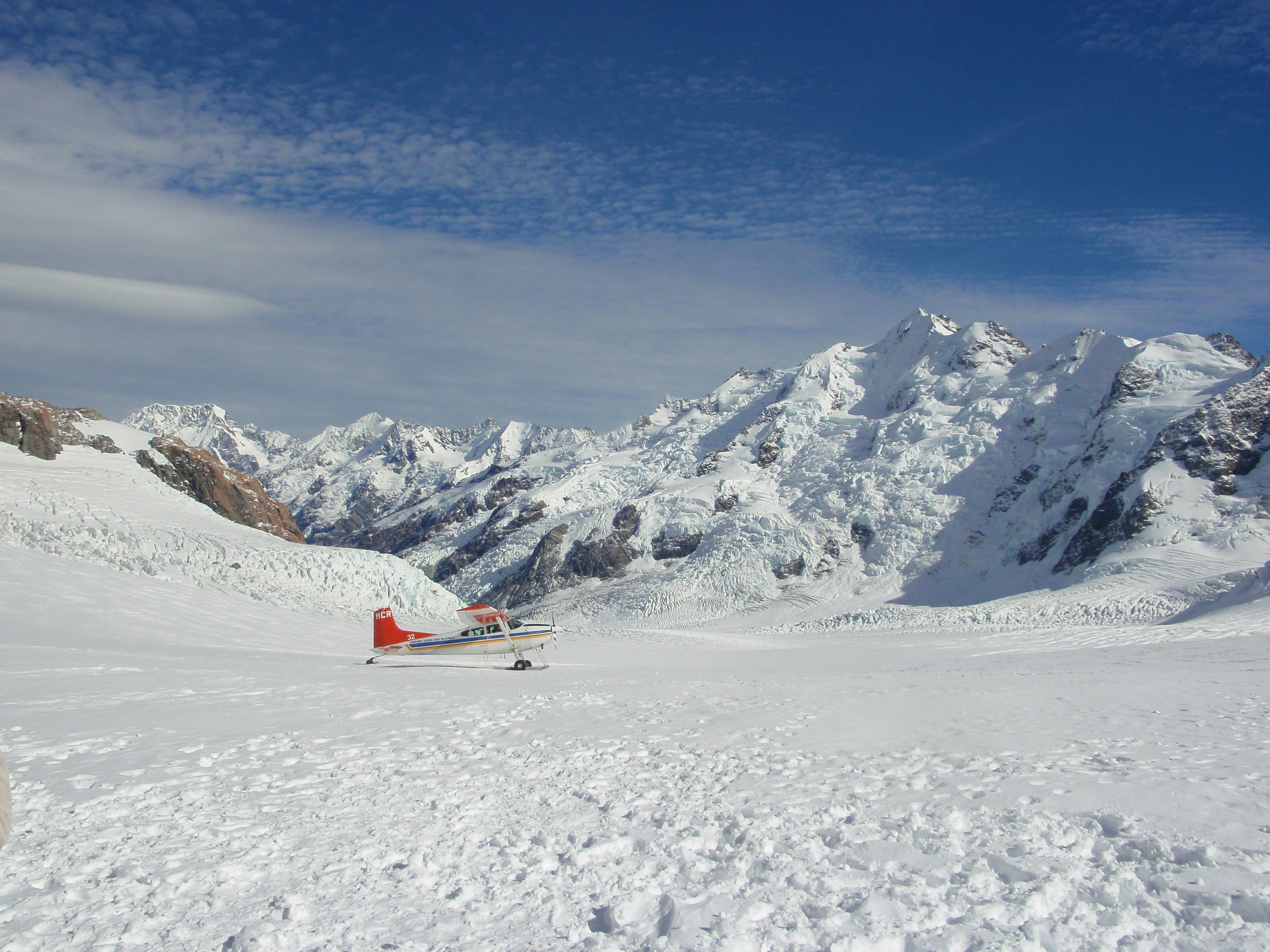A proposal to increase aircraft activity over Aoraki/Mt Cook National Park has the outdoor community concerned.
DOC’s draft Aoraki/Mt Cook National Park Management Plan, released in September, proposes up to 200 scenic plane landings a day in the Haupapa/Tasman Landing Zone – a number Federated Mountain Clubs president Peter Wilson called “ridiculous”.
It also opens up new landing zones, including areas on Pudding Rock, the Malte Brun Range, Lower Darwin Glacier, Tasman névé and the upper Murchison névé.
The current plan allows 5000 landings a year on the Tasman Glacier – an average of 13.5 each day.
Concerned about noise pollution and carbon emissions, Wilson said the increase in landings is inconsistent with DOC’s management plan policy to ‘avoid, remedy or minimise adverse effects on the qualities of tranquillity and natural quiet, solitude and remoteness’.
“There is no justification for a further increase [in aircraft activity] until such a time it can be proved that an increase won’t affect noise,” he said.
Wilson called the proposal a “suck it and see” idea. “It effectively says go out and have more landings, more aircraft activity, and if there’s a problem, we’ll work it out,” he said.
DOC Aoraki/Mt Cook operations manager Brent Swanson said DOC wished to retain the tranquility of areas such as the Godley River catchment and reduce noise in other areas such as the lower Hooker Valley.
“The relatively higher number of landings in the Haupapa/Tasman Landing Zone compared to other locations in the national park means noise levels in the Tasman Valley will be higher,” Swanson said.
“Monitoring will be used to determine whether the tranquility outcomes are being met. If not, the draft plan includes tools to address this, including reducing landings.”
Swanson said the 200 flights proposed takes account of seasonal demand and weather conditions, and the limit will not be met every day.
“Over winter, due to shorter days, adverse weather and less demand from tourists, aircraft landings will be a lot less than 200 a day. Whereas in summer, operators will be able to utilise the extra daylight hours to meet demand from tourists and other clients.
“The proposed Haupapa/Tasman Landing Zone allows these landings to be spread over a wider area than currently provided.”
The draft Westland Tai Poutini National Park Management Plan also includes an expansion for aircraft landing concessions.
Christchurch tramper James Thornton has kept a close eye on the management plans, and has concerns for the growing geographical spread of landing areas.
While he isn’t anti-aircraft access, Thornton would like to see restrictions in place to retain the tranquility of the park.
“If [flights] are concentrated, at least you know where you can go to get away from them,” he said.
“It seemed totally sufficient under the old plan – I don’t quite understand why it’s justified to open up so much more country,” he said.
Thornton worries the management plans will set a precedent for other areas, such as Aspiring National Park.
Submissions on the Aoraki and Westland draft management plans are open until February 4.







